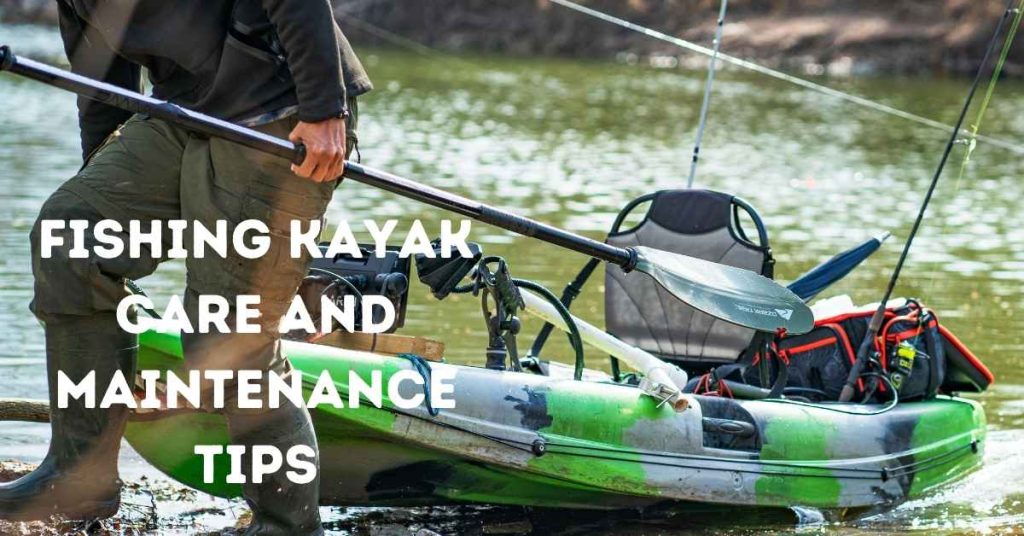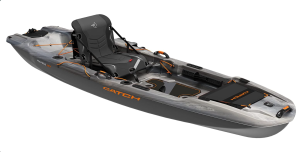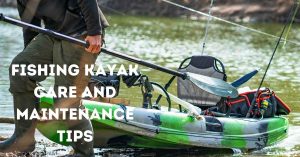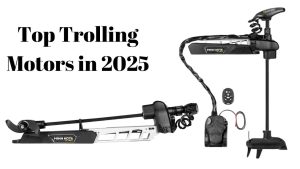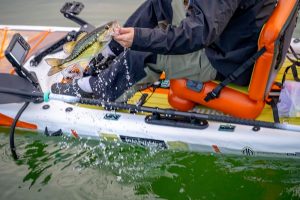If you love fishing and you have a fishing kayak. Then you definitely need to maintain and care for your kayak, for keeping your Fishing kayak in top shape is essential for safety and performance. A well-maintained fishing kayak can last for many many years, If you properly maintain and care your kayak ensuring that you have to safe and enjoyable experience every time you set out. In this ultimate guide, we will talk to you through everything you need to know about keeping your fishing kayak in pristine condition, from cleaning, maintenance, and storage to caring for specialized models like pedal and motorized kayaks.
Why Maintaining Important for Your Fishing Kayak
A properly maintained kayak helps to extend the lifespan of your kayak, improving safety, maintaining performance, and preventing damage from UV rays, saltwater, and other elements. Your investing time in the care and maintain kayak, you can ensure that your kayak remains reliable and enjoyable for years to come.
General Maintenance Tips for All Fishing Kayaks
There are general maintenance steps you should follow to keep your kayak safe. First, after every outing, rinse your kayak thoroughly with fresh water, especially if you have been paddling in saltwater, as salt can corrode parts over time. Use mild soap to clean away mud, algae, and fish residue. Pay special attention to hard-to-reach areas like scuppers and hatches. To avoid scratching the surface, use a soft cloth or sponge. Rinsing with a gentle water flow rather than high pressure is advisable, as high pressure can damage seals.
To protect your kayak from prolonged sun exposure (which can weaken the plastic or composite materials) store your kayak in a shadow area or use a kayak cover to avoiding damage. Other side every few months later using a UV protectant spray designed for kayaks can also help to prevent this issue. If you must store your kayak outdoors, covering it with a breathable tarp will prevent moisture buildup and protect it from the elements.
Inspecting your kayak to avoid damage before and after each trip is crucial. Look for cracks or dents in the hull, loose screws or fasteners, and leaky hatches and seals. Tighten or replace parts as needed to ensure everything is in good working order.
Maintenance for Pedal Fishing Kayaks
Pedal kayaks are known for their hands-free operation, but they require some extra care. Cleaning the pedal systems is vital since they can collect debris like sand and weeds. After every trip, remove the pedal drive and rinse it with fresh water. Use a soft brush to dislodge any debris, and ensure you dry it thoroughly before reattaching to prevent rust.
Regularly checking the tightness of the pedals is essential, as is ensuring that the drive moves smoothly. Using a silicone-based lubricant for moving parts will keep everything functioning well; however, avoid petroleum-based products, which can damage plastic components. If your pedal system has a propeller, check for damage or warping, clean it regularly to prevent algae buildup, and replace worn propellers to maintain efficient movement.
Maintenance for Motorized Fishing Kayaks
Motorized kayaks provide a boost in speed and range but require special attention to ensure the motor and electrical components remain in good condition. Charging the battery fully after each use is crucial for maintaining capacity. Store batteries in a cool, dry place when not in use, and regularly inspect for corrosion on terminals, cleaning them with a mixture of baking soda and water if needed.
For propeller and electrical maintenance, it is essential to remove and clean the propeller after each trip to prevent debris buildup. Inspect wiring and connectors for wear or rust and replace them as necessary. Testing the motor before each trip ensures that it starts smoothly, and checking for any strange noises or vibrations will help you catch potential issues early.
Proper Storage Solutions for Fishing Kayaks

How you store your fishing kayak can significantly affect its longevity and condition. You must follow this step to store your Fishing Kayak. Indoor storage is preferable; storing the kayak in a garage or shed keeps it protected from the elements. Using wall-mounted racks or ceiling hoists can help keep it off the ground, preventing damage. When storing the kayak, position it on its side or upside down to avoid creating pressure points.
When outdoor storage is necessary, you should follow these steps. Using a UV-resistant tarp is beneficial. Keeping the kayak elevated will prevent moisture buildup underneath, and avoiding direct contact with hard surfaces will minimize the risk of dents. For winter storage, draining all water from hatches and scuppers is crucial to avoid freezing damage. Applying a protective spray to seals and gaskets will keep them pliable, and if possible, store your kayak indoors during extreme cold to prevent cracking.
Caring for Kayak Accessories
Your kayak accessories need attention to stay in good working order, For seats and backrests, it is important to remove them and wash them with fresh water after each trip. Allow them to air dry to prevent mold and mildew, and check for wear and tear on straps and buckles, replacing them if necessary.
When it comes to hatches and storage compartments, wiping them down after each trip is wise. Ensure that mud and seals are clean and free of sand, and periodically apply silicone grease to seals to maintain watertight integrity. For fishing gear storage, clean rod holders, anchors, and other gear with fresh water, and store electronics like fish finders in dry bags when not in use. Regularly check mounting brackets for signs of rust or looseness.
Seasonal Maintenance Checklist
Keeping a seasonal maintenance checklist can help you stay on track throughout the year. In the spring, inspect for cracks and damage from winter storage. During the summer, regularly apply UV protection and inspect frequently for sun damage. In the fall, thoroughly clean your kayak and prepare it for winter storage, and during winter, ensure it is stored indoors if possible and avoid leaving it in freezing conditions.
FAQs About Fishing Kayak Care and Maintenance:
- How often should I clean my fishing kayak?
Clean your kayak after each trip, especially if you’ve been paddling in saltwater or muddy conditions, to prevent corrosion and damage. - What is the best way to store my fishing kayak?
Indoor storage is ideal, using wall-mounted racks or a ceiling hoist to keep it off the ground. If storing outdoors, use a UV-resistant tarp and keep it elevated to prevent moisture buildup. - Can I use any soap to clean my fishing kayak?
Use mild soap and fresh water for cleaning. Avoid harsh chemicals, as they can damage the kayak’s materials. - How do I protect my kayak from UV damage?
Use a UV-protectant spray specifically designed for kayaks, and store the kayak in a shaded area or under a cover when not in use.
Keep Your Fishing Kayak in Great Shape
Maintaining your fishing kayak does not have to be a chore. By following these tips, you can enjoy smooth, hassle-free trips on the water for years to come. A little care goes a long way in ensuring that your kayak is always ready for your next adventure. Happy fishing!

